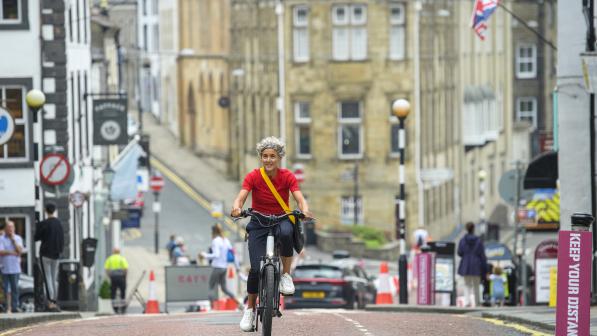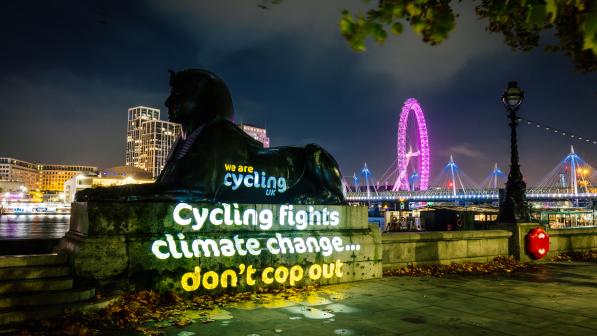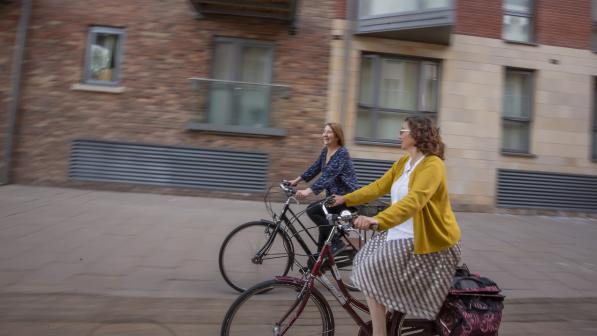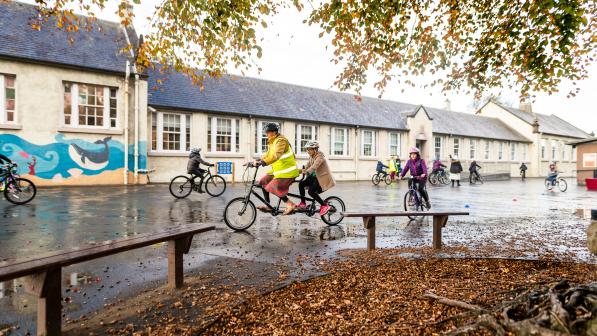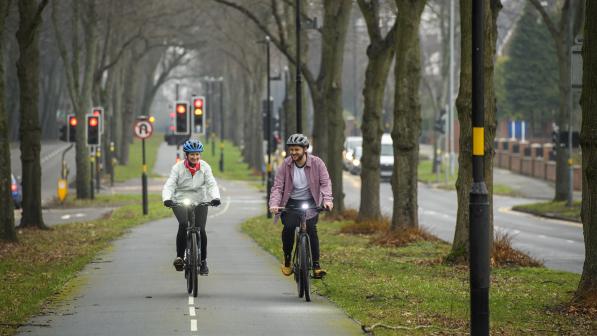National Audit Office quietly lifts lid on underfunding of active travel and the scale of cuts

The National Audit Office (NAO) has today (7 June 2023) published the report of its inquiry into active travel in England. The first sentence of the NAO’s press release is crystal clear: “Government is not on track to meet its objectives to increase rates of cycling and walking, despite increased ambition in recent years.”
It notes that “Active travel … has a range of benefits for people’s health and the environment, including being a low-carbon form of travel.” It goes on to say that “more than half (56%) of local authorities – who play a significant role in delivering interventions – have low capability and ambition to deliver active travel projects, which has affected the quality of active travel interventions delivered with government funding to date.”
It further adds that the Department for Transport (DfT) “does not yet know if the schemes delivered by local authorities to date have been of good enough quality and does not have a plan in place to track the benefits of its active travel investment.”
Still, it rightly complements DfT for recognising these problems and for having recently set up Active Travel England (ATE) to address them. It describes ATE’s role as being “to raise the design standards of active travel infrastructure, hold local authorities to account for their investments in active travel, provide advice on how to improve walking and cycling provision, and increase the skills and capacity in local authorities to deliver active travel schemes.”
It adds that "Active Travel England has made good early progress in tackling long standing issues, and the NAO’s report identifies areas that DfT and Active Travel England must continue to work on if they are to maintain this momentum. These include developing longer-term stable funding for active travel, building greater capability in local authorities to deliver schemes, and making people feel safer while walking, wheeling and cycling.”
I’d agree with all of this, except to note that it is ministers (rather than ATE) who need to be responsible for “developing longer-term stable funding for active travel”. That takes me to two charts contained in the NAO’s report, which are not highlighted in the press release, but which to my mind tell the real story of why the “Government is not on track to meet its objectives”.
One demonstrates the level of underfunding of the Government’s second Cycling and Walking Investment Strategy (CWIS2), even at the time it was launched in 2022. The other shows the devastating scale of the cuts that ministers then made in March 2023 to the ring-fenced funding within CWIS2.
Chart 1: The underfunding of cycling and walking

When CWIS2 was originally published in July 2022, it initially set out a ‘projection’ of £3.784bn of funding (or £3.8bn in round numbers) that DfT expected would be available for active travel over the four-year period of the strategy (April 2021 to March 2025). However, it was just a projection, because only £1.298bn of this (let’s call it £1.3bn) was ‘dedicated funding’ that was specifically ring-fenced for active travel.
The rest came either from other DfT funding streams or from wider Government funding (such as the Levelling Up fund). While some of this funding (for example, DfT’s own City Regions Sustainable Transport Settlement) could indeed reasonably be expected to be spent on active travel, other parts of it are rather less certain.
However, it appears that DfT knew at the time that this total of £3.8bn was nowhere near enough.
Later that year (in October 2022), Catherine West MP asked the then transport minister Lucy Frazer MP what estimates the Government had made of the funding needed to meet its targets for increased walking and cycling by 2025 and by 2030 respectively.
In reply, Lucy Frazer claimed that: “The department estimates that a minimum of £4.4bn is likely to be required to meet its cycling and walking objectives to 2025; and further, that a minimum of £5.5bn is likely to be required to meet the objectives to 2030.”
Figure 8 (shown above) of the NAO report – which is based on DfT modelling carried out in 2022 – shows that the first part of this answer was untrue. Spending £4.4bn would only result in:
- 1.2bn ‘trip stages’ being cycled in 2025, against a target of 1.6bn stages (a ‘stage’ is a trip or a part of a trip, such as cycling to a train station)
- An average person walking for 285 stages per year, against a target of 365 stages
- 53% of children normally walking to school, against a target of 55%
- 42% of trips in towns being walked or cycled, against a target of 46%
Cycling UK has claimed for many years that DfT was sitting on evidence which showed that between £6bn and £8bn was needed to meet its targets to double cycling and increase walking (both for school journeys and for walking more generally) by 2025.
The National Audit Office has confirmed what Cycling UK and others have been saying for years, namely that the government hasn’t committed adequate funds to achieve its own targets to increase walking and cycling
Sarah Mitchell, Cycling UK CEO
The table above shows that, at some point in 2022, the department itself estimated that £7bn would be required to meet its cycling target, come a lot closer to meeting the overall walking target, almost hit the walk-to-school target and slightly exceed the target for the percentage of trips in towns being walked and cycled.
Yet ministers chose that year to allocate just £3.8bn, despite their own evidence showing even £4.4bn would get them nowhere close to their targets – and contrary to what Lucy Frazer MP told the Commons later that year. And that was before they reduced this overall funding to just £3bn in March 2023.
As Cycling UK's CEO Sarah Mitchell commented: “The National Audit Office has confirmed what Cycling UK and others have been saying for years, namely that the government hasn’t committed adequate funds to achieve its own targets to increase walking and cycling. The government now needs to publish its own evidence on the level of funding needed, and then increase existing funding to enable Active Travel England to deliver the government’s goals.”
But that’s the total funding for CWIS2, including both ring-fenced and non-ring-fenced funding. What about the cuts just to the former? Here too, the NAO report lifts the lid on new information…
Chart 2: Cuts to dedicated funding for cycling and walking

The table above finally answers a question that has been perplexing Cycling UK and many others ever since Transport Secretary Mark Harper quietly unveiled some swinging cuts to active travel funding on 9 March 2023, as part of a wider ministerial statement on reductions in funding for transport projects.
Since then, a large number of MPs have tried asking all sorts of parliamentary questions, trying to work out how the scale of the cuts to dedicated funding for active travel. But they had faced a barage of evasive ministerial answers.
The answer, according to footnote 3, was £233m.
I’m not sure that’s the full story, as there are other aspects of this which still don’t add up. It looks as if some other sneaky cuts must have been made in previous years – hence there is still more digging to be done. But these two charts surely make it pretty clear why the Government is so far off course for meeting its targets for active travel.
It’s also clear what the Government needs to do now. One option – as the NAO report itself suggests – is that it could admit that it isn’t going to meet these targets. But that, of course, would have wider implications for its ability to meet its carbon targets, air-quality targets and much else besides.
The alternative is to publish in full its evidence on what is needed to meet its targets, and then act on it. This is what Cycling UK will continue to call for.
